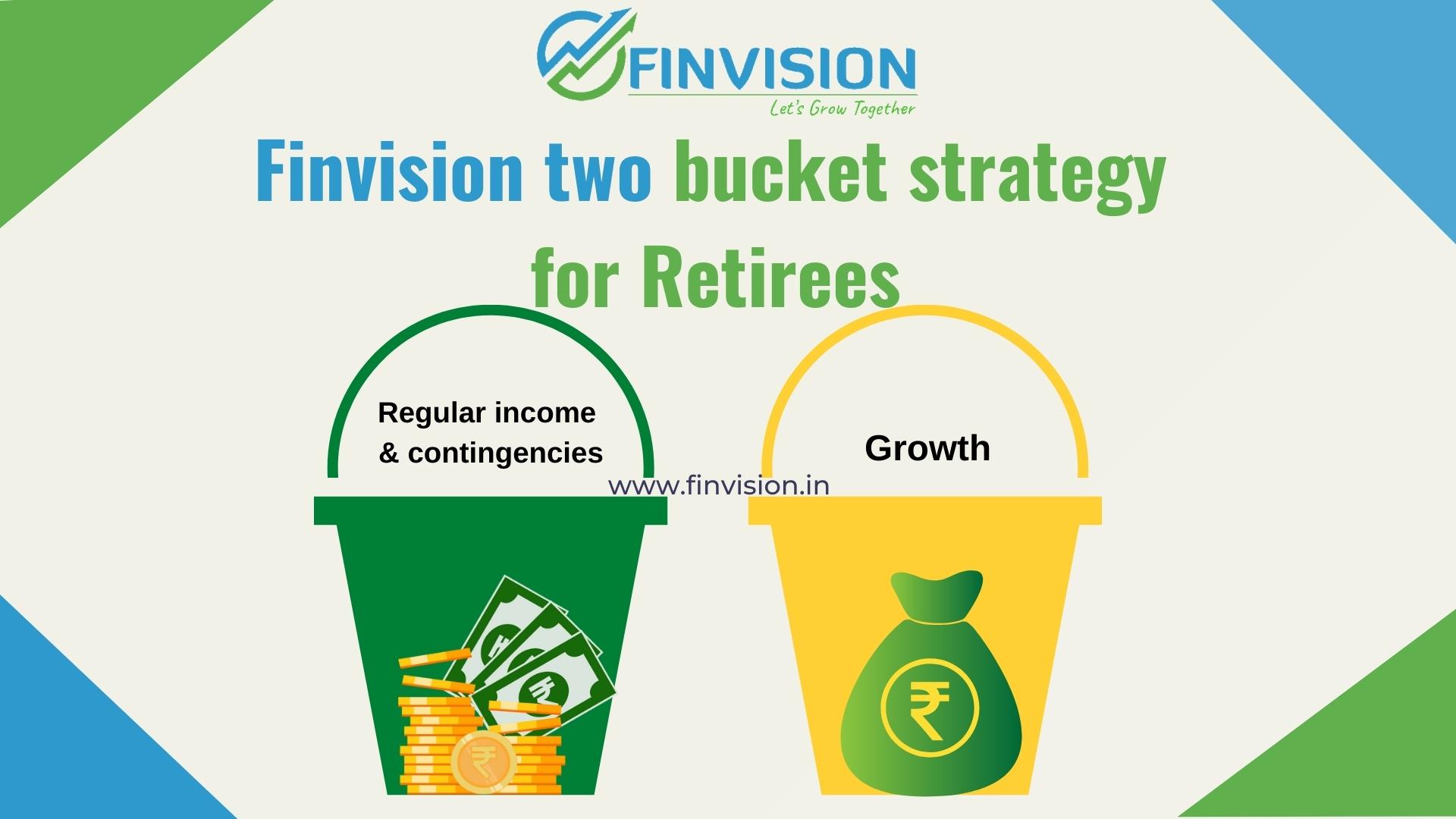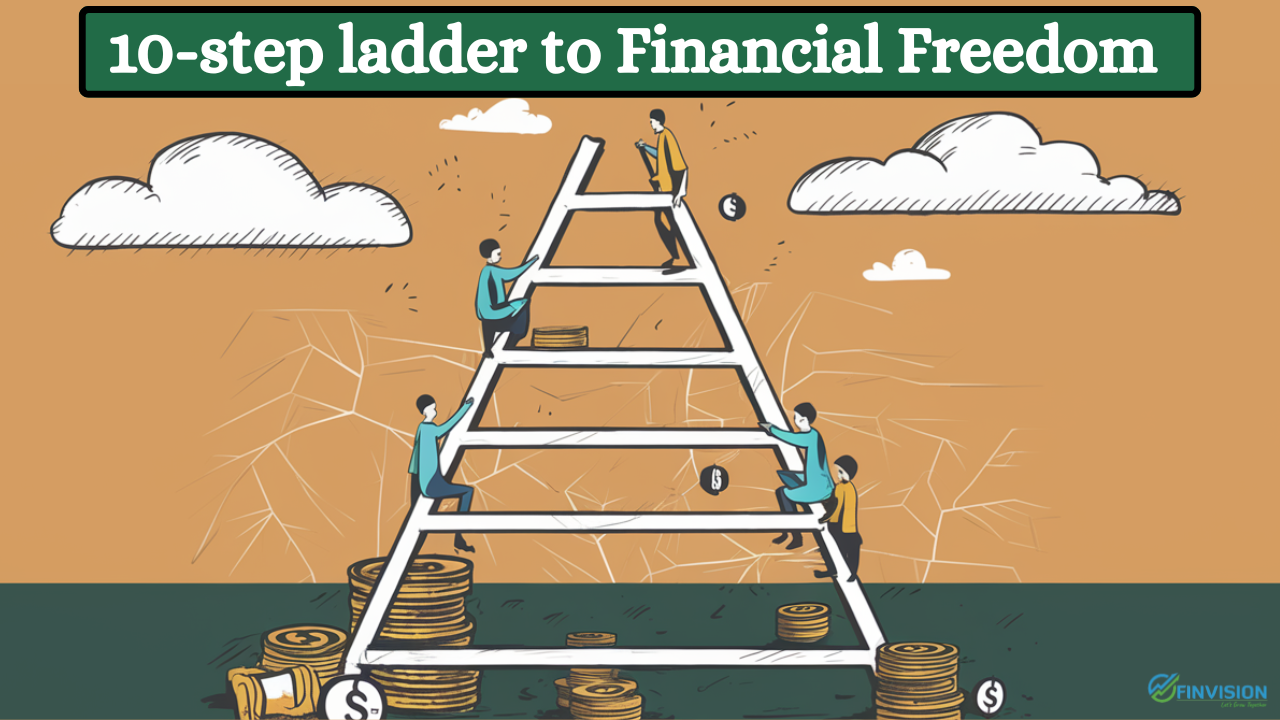 The best way to handle retirement corpus is to follow Finvision 2-Bucket strategy by investing the corpus across two different time-suitable asset buckets. Wherein, one bucket will take care of your regular income needs and act as a liquidity or contingency buffer for next 9-10 years, while the other one will invest to generate inflation-beating returns for those long years of retirement.
The best way to handle retirement corpus is to follow Finvision 2-Bucket strategy by investing the corpus across two different time-suitable asset buckets. Wherein, one bucket will take care of your regular income needs and act as a liquidity or contingency buffer for next 9-10 years, while the other one will invest to generate inflation-beating returns for those long years of retirement.
Here is how we suggest doing it by creating two different buckets for a corpus of say ₹1 Crore.
Bucket-1 (for regular income & contingencies): Set aside ₹40 Lakhs and invest this in 3-4 high-quality debt/ cash equivalent funds including ₹15 Lakhs in SCSS(Senior citizens savings scheme). From these funds, set up a withdrawal plan or SWP of ₹40-45000 per month as regular income.
Following this strategy even at a very conservative 6% ROI, this bucket will easily take care of your expenses for 9-10 years and will also act as a Contingency Fund from which money can be withdrawn in times of need. Also, the withdrawal amount can be increased or reduced according to the needs.
Bucket-2 (for higher growth): Invest the remaining ₹60 Lakhs in this bucket to be deployed in aggressive assets like equity etc to achieve high growth and beat inflation.
Since for the next 9-10 years, your money requirements will be withdrawn from the 1st bucket (using SWP), this 2nd bucket remains untouched and continues to grow. Assuming even an average return of 12%, this 2nd bucket will grow to almost ₹1.86 crore in 10 years. After 10 years you can take out adequate money (enough for the next 10 years expenses) from this bucket and transfer it into the 1st bucket, to cater for your next 10 year withdrawal requirements.
This cycle to be repeated after every 10 years and one can continue to drive regular income year after year from the 1st bucket.
As there is no one-size-fits-all, thus the size of buckets can be suitably varied depending on how aggressive or conservative the retiree is. Final allocation and instrument selection will therefore depend on the individual’s financial goals, income requirements, available corpus and risk appetite.
But the core idea remains pretty simple: Use the 1st bucket for income needs and the 2nd bucket for the portfolio growth. This helps balance the income needs by investing in less volatile debt and debt/ Cash equivalents in the 1st bucket for the short term, and equity and aggressive/ growth assets in the 2nd bucket for the long term.
Additional points:
1. Unlike your other goals, you don’t get any loans to fund your retirement needs. Also, unlike yesteryears when children used to take care of their parents in their old ages, things are a lot different now. So, it’s best not to depend on children and/or relatives for any of your retirement needs.
2. Real estate has not been recommended in these buckets for the followings:-
– It will need a large upfront amount to buy the property and it being relatively illiquid.
– Difficult to keep the property on rent at all times.
– Older retirees will find it difficult to keep up with the operational demands of real estate and tenants.
To know more about Finvision 2-bucket strategy for the retirees, register for our upcoming webinar at 7:00PM on 25 Sep 2022(Sunday): https://forms.gle/3WbwQK9CXLDwxbJQA
Don’t forget to share the post with your friends in fraternity for them to benefit, and follow us on LinkedIn and Social media channels to stay updated.
For all your financial, retirement, investment, insurance and tax optimisation needs #TeamFinvision
Happy Investing!












